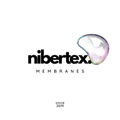Interviews
Australian alpaca fibre sector may remain stable in 2013
24 Jul '13
3 min read
The Australian alpaca fibre industry is not expecting better prospects this year mainly due to highly variable product, contamination of consignments and lack of technological advancements in processing alpaca fibre.
Speaking to fibre2fashion, owner and manager of Australian Alpaca Fibre Testing (AAFT), Mr. Paul Valley said, “The prospects for alpaca fibre remain constrained due to highly variable product, low volume and contamination of consignments.”
“Until alpaca communities develop comprehensive strategies and procedures aimed at creating viable and sustainable fibre industries, such constrains will remain,” he adds.
Talking about the challenges faced by alpaca fibre producers, Ms. Michelle Malt, president of Australian Alpaca Association (AAA), says, “A significant proportion of alpaca farmers belong to small holdings, limiting the size of their herd they can farm.”
“Costs associated to shearing can also be relatively high, the fleece produced by alpaca herds varies in micron and colour and some producers do not have sufficient knowledge and experience in clip preparation as well as the requirements of processors who may ultimately purchase the fibre also affects the alpaca fibre industry in Australia,” she informs.
When asked about the steps to be taken to boost the alpaca sector in the country, Mr. Valley says, “Fibre industry strategies should start with genetic improvement, demand driven fleece production, harvesting and grading, market promotion, research and dual carriageway feedback. These strategies should all be integrated within a whole of industry approach.”
“Our Premium Alpaca scheme has shown that it is clearly possible to achieve a reputation for high grade fleece consignments with our ultrafine and superfine bales that have continually broken price records. Our latest 17.4 micron consignment achieved a price of AUD66.00 per greasy kilo,” he adds.
There are two major varieties of alpaca. The first is the Huacaya, pronounced wua'ki'ya, and is the most common alpaca type in both South America and Australia. The less common type is the Suri, soo'ree, and in Australia only a small percentage of alpacas are suris. Suri numbers continue to grow in Australia, and like the huacaya, the suri responds well to Australian gentler climate and husbandry practices.
The alpaca fibre combines softness with strength. Alpaca products have the durability of a coarser garment – all the benefits of wool and less of the itch. It is warm, yet amazingly light. Alpaca fibre comes in a beautiful range of natural colours – white, silver, all shades of grey and fawn, chocolate brown and true jet black; it also dyes beautifully.
Fibre2fashion News Desk - India
Popular News
Leave your Comments
Editor’s Pick
Therese Premler-Andersson
Textile Machinery Association of Sweden (TMAS)
Jason Kent
British Textile Machinery Association (BTMA)
































-Ltd..jpg?tr=w-120,h-60,c-at_max,cm-pad_resize,bg-ffffff)





.jpg?tr=w-120,h-60,c-at_max,cm-pad_resize,bg-ffffff)
.jpg?tr=w-120,h-60,c-at_max,cm-pad_resize,bg-ffffff)






